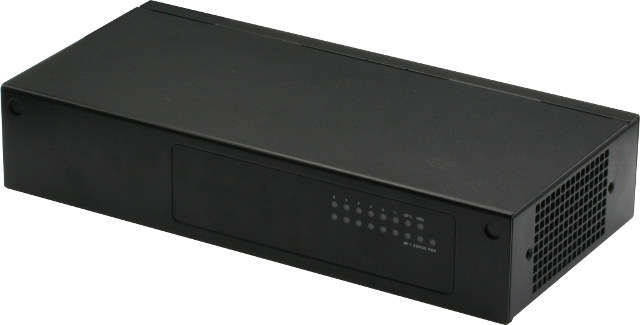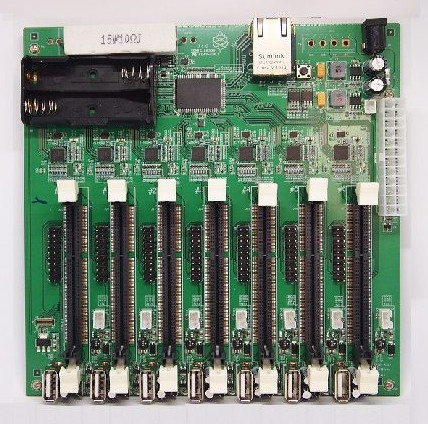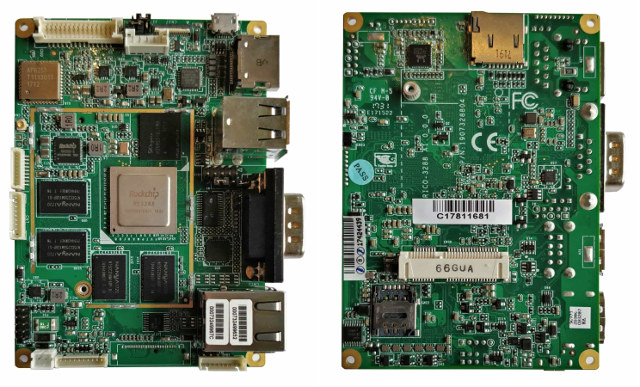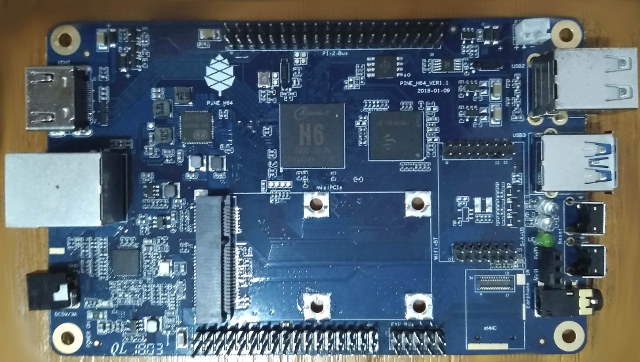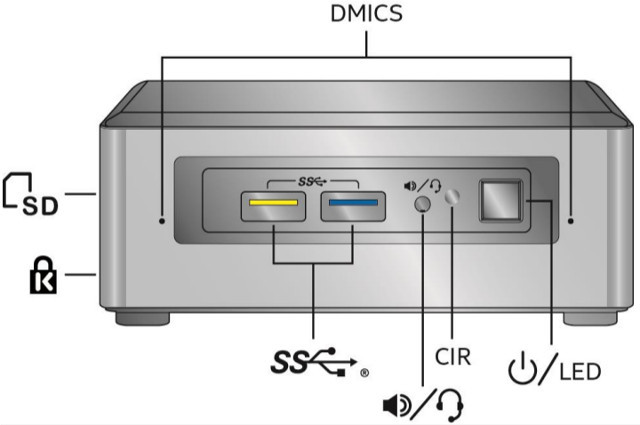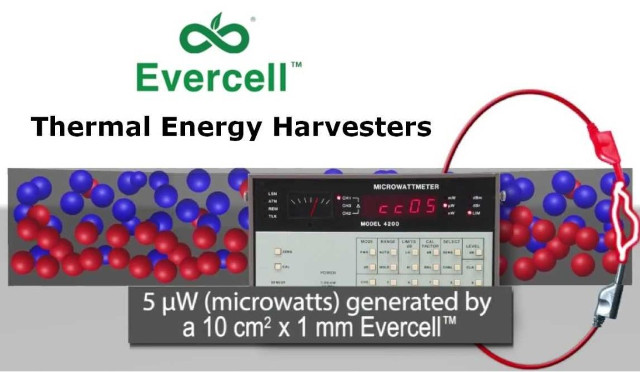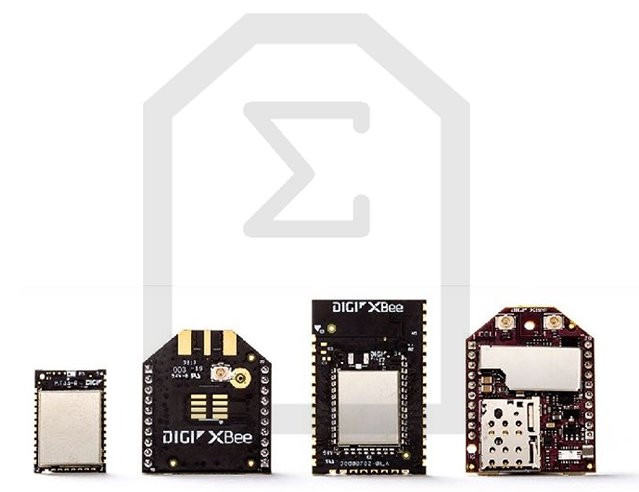I’ve been watching or reading news about holographic displays recently where you can watch 3D objects into space without 3D glasses. Not the IoT gateway with an holographic maid, but I watched some hologram demos recently, and RED is bringing an (expensive) Android phone – called Hydrgen – to market with an holographic display. Today, I was made aware that you can buy some sort of fan to produce holograms designed in your own computer. It’s referred to “M1 Naked Eye 3D Holographic Advertising” in several shops, and as the name implies it’s likely mostly useful for businesses rather than home users. Hardware specifications: LEDs – 224x RGB0805 LEDs, 100,000 hours life Display – 16.53″ with 450 x 224 pixel resolution; viewing angle: 150° Supported media mp4, avi, rmvb, mkv, gif, jpg, png 3D effect media – MP4 or GIF with black background Storage – micro SD slot for media […]
AAEON FWS-2360 Denverton Desktop Network Appliance Supports up to 6 Ethernet Ports, SATA Storage
Last summer, we started to see products and motherboards based on Intel Atom C3000 series Denverton SoC, including GIGABYTE MA10-ST0 server motherboard and Axiomtek NA362 network appliance with up to 10 LAN ports. AAEON has informed me they’ve launched their own Denverton network appliance with AAEON FWS-2360 equipped with a pair of fiber/copper SFP GbE ports, four GbE ports and two Mini-card slots to accommodate WiFi and 4G LTE expansion. The device also comes with an mSATA socket and a 2.5” SATA bay for storage. AAEON FWS: SoC (one or the other) Intel Atom C3308 dual core Denverton processor @ 1.60 / 2.20 GHz with 4MB cache; 9.5W TDP Intel Atom C3558 quad core Denverton processor @ 2.20 GHz with 8MB cache; 16W TDP System Memory Dual core – 1x DDR4 SODIMM ECC DIMM Quad core – 2x DDR4 SODIMM ECC DIMM Storage – On-board eMMC flash up to […]
Pine64 ClusterBoard is Now Available for $100 with one Free SOPINE A64 System-on-Module
We’ve previously reported Pine64 had developed “Sopine Clusterboard” for a specific project with support for up to seven SOPINE A64 SoMs powered by Allwinner A64 quad core Cortex A53 processor. At the time (August 2017), it was unclear whether the company would sell to the solution publicly, but they’ve now gone ahead and launched Pine64 ClusterBoard for $99.99 plus shipping, including one free SOPINE A64 module for a limited time. PINE64 ClusterBoard specifications: SoM Slots – 7x SO-DIMM slot for SOPINE A64 modules Connectivity 1x Gigabit Ethernet port (RJ45) All SoMs are connected via Gigabit Ethernet using 7x RTL8211E transceivers and RTL8370N network switch (See diagram below) USB – 7x USB 2.0 port, one per SoM Expansion – Headers for each SoM with UART (serial console), I2C, key ADC, GPIOs, SPI, RESET/POWER 5V and GND Misc – RTC, reset button, optional EEPROM connected to RTL8370N Power Supply 5V/15A via power barrel […]
Amarula Vyasa is a $150 Pico-ITX Single Board Computer Powered by Rockchip RK3288 SoC
Yesterday, as I published Linux 4.15 changelog for Arm and MIPS, I discovered a new Rockchip RK3288 platform described as “Amarula Vyasa single board computer”, so that got me interested. The full name of the company is “Amarula Electronics Limited Sony UK”, which means Vyasa is the name of the board. Amarula Vyasa relies on a 2.5″ Pico-ITX form factor, and is available in either commercial and wide temperature (WiTAS) range. The board is equipped with 2GB RAM, 16GB eMMC flash, exposes ports and connectors such as HDMI 2.0, eDP, and LVDS, and plenty of network connectivity (WiFi, Ethernet, mPCIe modem…) that would make it suitable for a connected digital signage, or other applications requiring a (touchscreen) display and redundant Internet / network connectivity. Amarula Vyasa specifications: SoC – CPU Rockchip RK3288 (ARM CortexTM -A17 Quad-core 1.6GHz) System Memory – 2GB DDR3L SDRAM Storage – 16GB eMMC flash, Micro SD […]
Pine H64 Development Board Features Allwinner H6 processor, Gigabit Ethernet, USB 3.0 and PCIe for $26 and Up
As expected, Pine64 has now launched Pine H64 development board, powered by Allwinner H6 quad core processor, and contrary to Orange Pi H6 boards, it exposes both Gigabit Ethernet, and a USB 3.0 port, which should please people wanting fast storage combined with Gigabit Ethernet. The board comes in three variants with 1, 2 or 3GB of memory, with all also equipped with a mini PCIe interface, and various I/O headers. Pine H64 specifications: SoC – Allwinner H6 quad core Cortex A53 processor with Arm Mali-T720MP2 GPU System Memory – 1, 2 or 3GB LPDDR3 PC-1600 RAM Storage – 128 Mbit SPI flash, micro SD card slot, and eMMC flash module connector (all bootable) Video Output – HDMI 2.0a up to 4K @ 60 Hz Audio – HDMI audio output, Video Decoding – 10-bit H.265 up to 4K @ 60 fps, VP9 and H.264 up to 4K @ 30 fps […]
Intel Gemini Lake NUC7CJY/NUC7PJY Kits and Mini PC Specifications Released
Based on Intel NUC 2018/2019 roadmap published, we expected the first Intel Gemini Lake NUC mini PC to launch right at the end of 2017, but there’s been some delays. Since then we’ve learned Gemini Lake mini PC from third parties should launch around the end of March / beginning of April, and the official Intel GLK NUCs might launch around that time frame, or maybe a little earlier, because today, I’ve been informed the specifications for NUC7CJY/NUC7PJY kits and mini PC had been released on Intel website. Both variants have basically the same specifications expect NUC7CJY comes with a Celeron processor, and NUC7PJY with a Pentium Silver processor: SoC Intel NUC Kit NUC7CJYH / Intel NUC Mini PC NUC7CJYS – Dual core Intel Celeron J4005 processor @ 2.0 GHz / 2.70 GHz (Turbo) with 4MB cache, Intel HD Graphics 600; up to 10 TDP Intel NUC NUC7PJYH – Quad […]
Evercell Thermal Energy Harvester to Power Battery-less IoT Wireless Sensors
In order to be successful the Internet of Things needs to be extremely inexpensive per node, and the problem is that most remote sensors are non powered by batteries, which either needs to be replaced or recharged, which involve maintenance costs. One ideal solution is battery-less IoT sensor nodes, that do not need any battery, and instead rely on energy harvesting. The idea is easier said that done, especially if you intend to do it cheaply. While there have been solutions provided over the years for example using vibration energy harvesting or water flow, battery-less devices are still not that common, but companies still bring new energy harvesting devices to market. One of those is Face International’s Evercell thermal energy harvester that leverages the temperature difference within a material to generate electricity, as long as ambient temperature is above absolute zero. The company plans to manufacture various models of their […]
Digi Introduces XBeeX3 IoT Modules with New Micro Form Factor, RF and Cellular IoT Connectivity
Digi International has just announced the Digi XBee3 series of RF modules and cellular IoT modules. The modules will be available in the existing Digi XBee SMT amd through-hole form factor, as well as a new micro form factor (19×13 mm) that’s about a third of the size of the original XBee RF module. The RF modules will first come with ZigBee 3.0 and IEEE 802.15 support, but Bluetooth LE will be available through a firmware update later on, and WiFi and DigiMesh version will be brought to markets too. The first cellular module supports LTE Cat.1, but the company will eventually launch NB-IoT and eMTC (LTE Cat M) versions for Europe and the US respectively. Some of the shared key capabilities listed by the company: Over-the-air (OTA) changes to devices in the field for bug fixes and new features Dynamically reconfigurable, based upon situation Establish business rules to aggregate, store, […]



